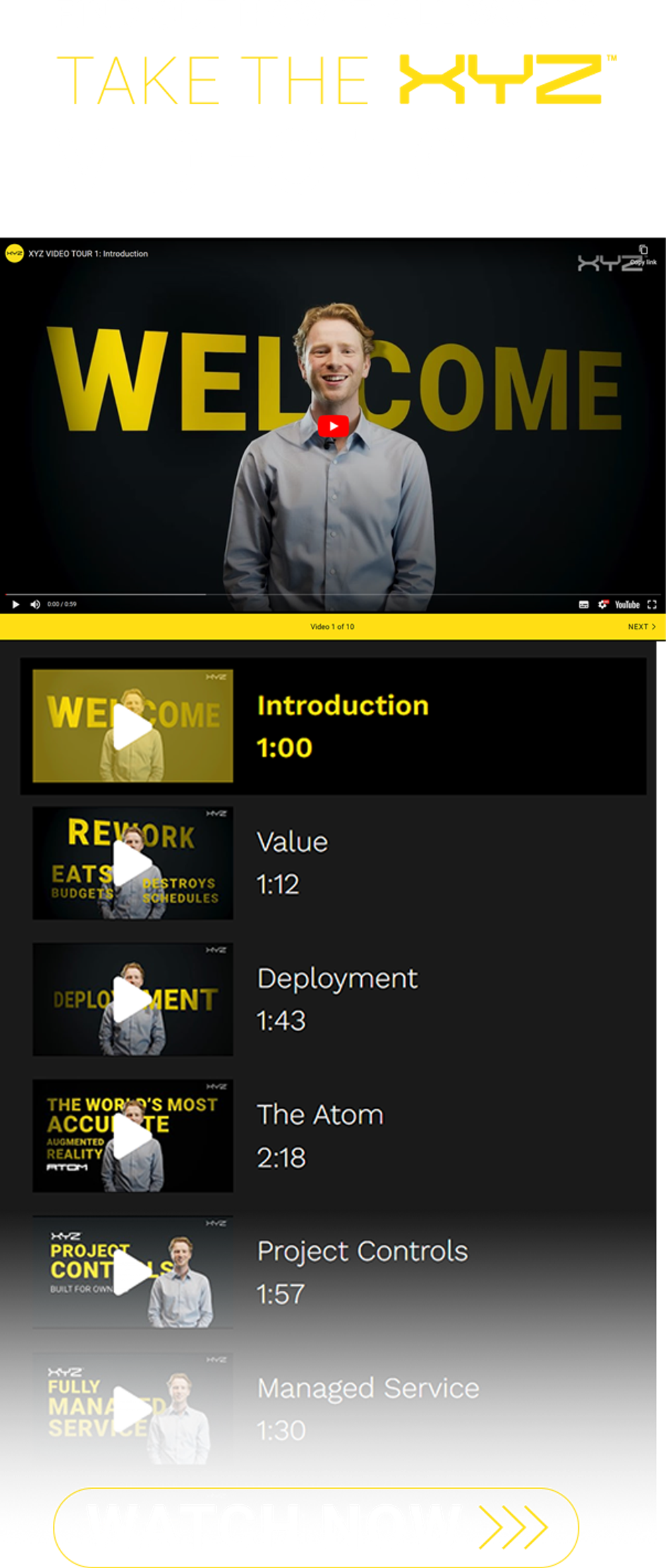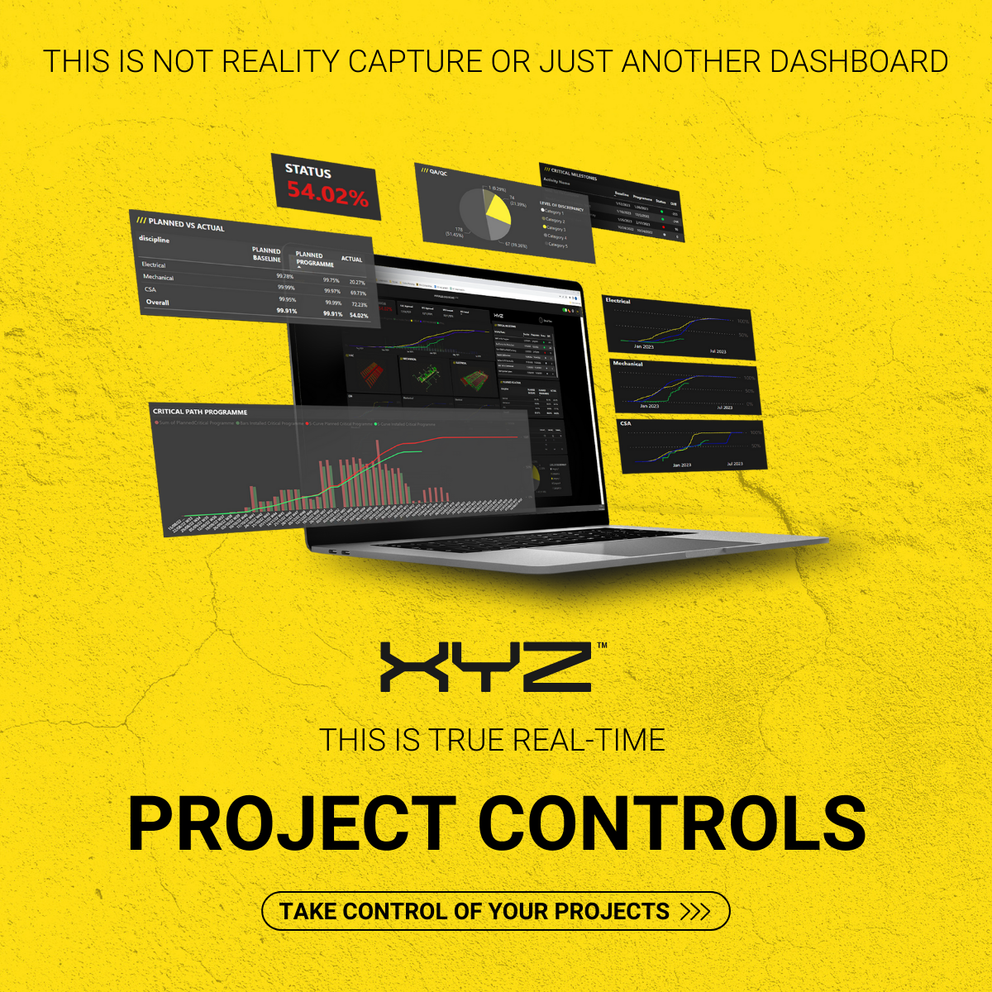-
Services
Services
Find out how we work with our clients and deliver value to construction projects from day one
-
Solutions
Solutions
Discover how all our solutions sync together to deliver construction's most powerful BIM platform to date
-
Built for
Built for
-
Industry
Industry
Understand how we support construction's biggest sectors, and hear from our clients who have experienced the power of XYZ
-
Resources
Resources
Get stuck into all our latest thought leadership, news, reports and industry leading content
-
Company
Company
Dive into what makes XYZ tick, unearth why construction is in our DNA and why we are world leaders in AR solutions

Insights
7 Components of Data Center Infrastructure

04 December 2023
With a rise in technology comes the rise of data and the need to store it. Many companies own data centers to house and safeguard their information and data.
When building a data center, it's imperative to plan the infrastructure to accommodate activities, performance metrics, and goals of the business. For that, you must know what the components are and what they do.
This article will cover the components of a data center and some of the different types of infrastructures. We’ll also take at how XYZ Reality’s tools can help businesses build it right, first time.
What is a data center?
Before we can delve into the details of what data centers are made up of, let’s first break down what a data center is. In the age of technology, businesses and individuals rely heavily on platforms such as Google to provide us with information in seconds.
But where does this information come from, and how do large service providers ensure that they can provide service at any moment of the day? Simple, through data centers. Or, in other words, physical facilities where data is stored.
We can categorize all data center components into three major parts:
Network. The ''network'' in a data center is the system of cables, routers, and switches that connect all devices within the data center. It allows data transfer between different locations, both internally and externally.
Storage handles how data is stored and retrieved. It also ensures the security and availability of data.
Servers are likely the most well-known component. These devices manage and process data. Modern server infrastructure also includes cloud computing and virtualization. This technology enables businesses to access servers remotely.
7 Components that make up a data center’s infrastructure
When we talk about infrastructure, we’re referring to a system or an underlying framework. Infrastructure can also mean the resources, like equipment and buildings, needed for a certain activity.
There's a common misconception that data center infrastructure is only made up of computing resources. However, non-computing resources, such as power and cooling, are also necessary parts for a data center’s day-to-day operations. Here's a list of components a data center comprises.
Servers
Think of servers as the engines. They allow information to be accessed and processed. Servers come in various form factors, including blade, rackmount, and tower.
Blade Servers: A blade or high-density server contains a computer that manages and distributes data across the network. It is the conduit between the systems, computers, applications, and programs in a data center.
Rackmount Servers: A rackmount server is a computing system that fits into a rack. It typically consists of multiple CPUs and storage drives. The rack has several ''bays” or mounting slots that house hardware units.
Tower Servers: A tower server is the hub of all the devices in a data center. Since it has an independent design, you can add it to your existing network with ease. Tower servers are also easy to maintain since they allow data storage in a single system instead of scattering it across multiple devices.
Networking Equipment
The networking equipment in a data center allows for effective communication between devices. It is essential for sharing information on local networks and connecting to the internet. It may include:
- Switches
- Routers
- Hubs
- Network bridges
- Wireless access points
- Brouters (or bridge routers)
- Multiplexers
- Care routers
- Cable modems
- Storage Equipment
As mentioned earlier, data centers require storage solutions to store information. These include hard drives, tape libraries, and other storage media such as optical discs. More recently, cloud storage has emerged as a reliable choice for storing data. It’s highly secure and allows for remote access to data.
Security Systems
The data center security market is a billion-dollar industry in itself. Data centers often house sensitive and confidential information; therefore, they require robust security measures.
Security systems, like biometric and firewall solutions, also help form the center’s infrastructure. Other mechanisms and tools include data encryption, authentication, and authorization protocols.
In addition to digital safety measures, there are physical security measures as well. Server racks are locked to prevent unauthorized access. Plus, data centers are surveilled using security cameras.
Cooling and Power Devices
Let's look at the non-computing side of things now. Data centers require a lot of energy to operate. They also generate a lot of heat, which has to be funneled and regulated through effective ventilation. Cooling and power devices help in this regard. Examples of these devices include air conditioners and cooling units.
Physical Server Racks
The servers — the backbone of a data center — have to sit somewhere. Their housing units are called racks. These racks take up most of the space in the data center and can store hundreds of servers depending on their size.
Cables and Internet
Lastly, data centers need the internet in order to connect to other remote locations. To do this, they depend on cables for connectivity.
Data centers use cables of different sizes to connect the servers internally and to external networks. The types of cables a center uses depend on how fast and how far the data is required to travel.
Build better by considering infrastructure first
To house these components, companies need a large-scale building or compound to keep the data safe. When constructing data centers, construction companies often face challenges due to the complex nature of these projects.
That’s why XYZ Reality is helping companies make their complex builds simpler and easier to manage. XYZ’s tools enable construction teams to track progress in real-time and eliminate rework from the design phase, reducing timelines and budget overruns.
Build your data center right with XYZ Reality
Technology is here to stay. As it stands today, much of our world is fueled by technology, and judging by trends, this will only increase. With that in mind, it makes sense to transform infrastructure in data centers, too.
One way to do this is by using augmented reality (AR) and a cutting-edge project controls solution in the construction process. At XYZ Reality, we have tools that help data centers get built faster and more accurately.
The Engineering Grade Atom™ headset offers the optics, power, and processing prowess to create an interactive 3D model of projects, boasting a model positioning of 3 to 5-millimeter accuracy.
On-site workers can use these hyperscale 3D models to perfect the location and install data center components, such as servers, power supply, and ventilation systems. The AR-based visual guidance lowers the risk of rework, which is the root cause of budget overruns.
XYZ’s advanced project controls solution also enables teams to track build progress linked to the schedule, right down to the smallest details. All data syncs instantly, providing an accurate real-time view of the health of all your projects, from a single project controls platform, accessible anywhere.
Request a demo to see the potential of AR in data centers and the benefits of using it for infrastructure optimization.







